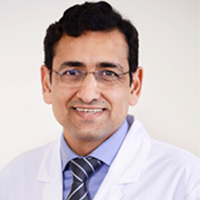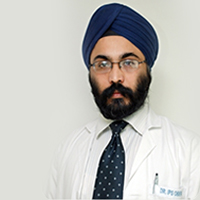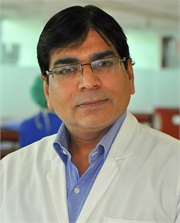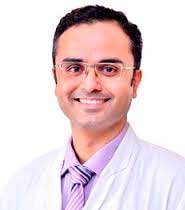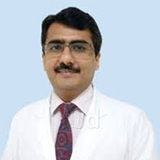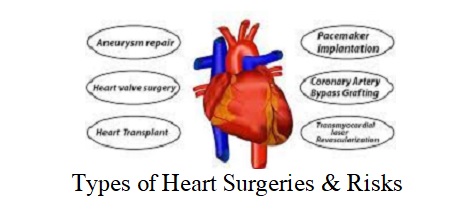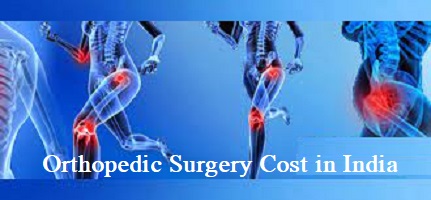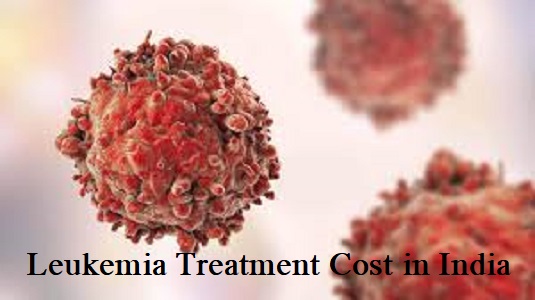Sickle Cell Disease (SCD): Treatment, Cost, Types, Symptoms, Diagnosis & Causes
Sickle cell disease, often known as sickle cell anemia, is an inherited blood illness that reduces red blood cells in the body. Sickle cell disease is caused by defective protein in red blood cells. RBCs normally have shapes like discs, and are flexible and smooth, which allow them to flow through even the smallest blood vessels. However, with sickle cell disease, red blood cells are now shaped abnormal, sickle-like form; and are unable to transport oxygen throughout the body. These misaligned cells harden and clump together, consistently blocking blood vessels and causing severe pain and potential organ damage. You can read about sickle cell anemia treatment, causes, symptoms, etc.
Africa is the global epicenter for sickle cell disease, a genetic blood disease that is devastatingly widespread across the continent. This disease has a global impact, with more than two-thirds of its 120 million people residing in Africa. Each year, roughly 91,011 children in Nigeria are born with sickle cell disease, emphasizing the seriousness of the situation. Unfortunately, many affected infants in Sub-Saharan Africa do not survive their teenage years because of a lack of access to medical care.
Sickle cell disease was once a life-long sickness. Medications were only available to alleviate symptoms and prolong life. But now it is curable with advanced bone marrow transplants because of technological advancements.
India is an appealing option for sickle cell anemia bone marrow transplants. Its success can be defined by skilled hematologists, low-cost options, and cutting-edge medical facilities. Allogeneic bone marrow transplants are used to treat Sickle Cell Anemia in India, with prices starting at USD 22,000. However, the final cost is determined by several factors, including the patient’s medical condition, donor availability, the surgeon’s level of experience, and the choice of hospital.
Types of Sickle Cell Anemia
Sickle cell anemia presents itself in a variety of types that can be identified by the genes acquired from parents. Some of the types of sickle cell anemia are:
- Hemoglobin SS (HbSS): This is the most severe type and affects 65% of people with SCD. It develops by inheriting two hemoglobin S genes from both parents, resulting in chronic anemia and more serious symptoms.
- Hemoglobin SC (HbSC): A milder to more serious type that affects roughly 25% of persons who have the disease. This happens as a result of receiving one hemoglobin S gene from one parent and one hemoglobin C gene from the other, resulting in a less serious anemia than HbSS.
- Hemoglobin (HbS) beta thalassemia: It happens when one receives a hemoglobin S gene from one parent and a beta thalassemia gene from the other. There are two subtypes: “Plus” (HbS beta +), which affects around 8% of SCD patients, and “Zero” (HbS beta 0), which affects approximately 2%. The former is milder, and the latter is more serious similar to HbSS.
- Other Rare Forms: These include hemoglobin SD (HbSD), hemoglobin SE (HbSE), and hemoglobin SO (HbSO). They are the result of inheriting one hemoglobin S gene and one gene producing another defective hemoglobin variation (D, E, or O). These types are less common and are often linked with milder symptoms.
Sickle Cell Anemia Trait
The sickle cell trait (SCT) is a hereditary disorder in which an individual inherits one normal hemoglobin gene (HbA) and one mutant emoglobin S gene (HbS) from their parents. People with SCT do not typically exhibit symptoms, but they may develop temporary changes in red blood cell structure under extreme conditions. Importantly, people who have SCT can pass on the HbS gene to their children. When both parents have SCT, their child has a 25% chance of inheriting two HbS genes, resulting in sickle cell anemia.
Sickle cell trait (SCT) is benign and it is helpful in countries such as Sub-Saharan Africa because it makes people more immune to malaria. The presence of one sickle cell gene and one normal gene (sickle cell trait) generates conditions in which the malaria parasite finds it difficult to enter their blood cells, lowering the severity of malaria infection in SCT carriers.
Symptoms of Sickle Cell Anemia
Sickle cell anemia symptoms typically occur in children between the ages of 5 and 6 months and can raise the chance of developing life-threatening health problems as people get older. Sickle Cell Disease presents with various symptoms, including:
- Anemia: Shorter red blood cell lifespan leads to fatigue due to low oxygen levels.
- Pain Crises: Intense pain is caused by a blockage in blood flow, affecting multiple body parts.
- Swelling: Occurs in hands and feet due to blockage in blood vessels.
- Infections: Weakened immunity necessitates antibiotics and vaccines.
- Delayed Growth: Oxygen shortage hinders growth in children and puberty in teenagers.
- Visual problems: Sickle cells may get stuck in the eye’s blood arteries causing retinal damage as well as difficulties with vision.
- Bed wetting due to associated Kidney problems
Complications of Skin Cell Anemia
Sickle cell anemia is a complicated illness that causes a variety of complications, some of which can be fatal.
- Life-Threatening Strokes: Sickle cells might hinder blood flow to the brain, causing weakness, difficulty in speaking, and even loss of consciousness.
- Acute Chest Syndrome: Lung infections or blood vessel blockages can cause distressing chest pain, fever, and breathing difficulties.
- Pulmonary Hypertension: It causes high lung blood pressure, tiredness, and shortness of breath in adults.
- Organ Damage: Sickle cells destroy organs of oxygen, potentially damaging the kidneys, liver, and spleen.
- Splenic Sequestration: A serious problem in children, causing spleen enlargement and acute abdominal pain.
- Eye Complications: Sickle cells can impair vision by blocking eye blood vessels.
- Leg Ulcers: Painful open sores on the legs, impacting mobility and comfort.
- Gallstones: Resulting from the breakdown of red blood cells, potentially causing gallbladder issues.
- Priapism: Painful, prolonged erections in men due to blood vessel blockage in the penis.
- Blood Clots: Sickle cells can lead to deep vein thrombosis or pulmonary embolism.
- Pregnancy Challenges: Expectant mothers with sickle cell anemia face higher risks, including high blood pressure, blood clots, and premature births.
- Vaso-Inclusive Crisis (VOC)
Causes of Sickle Cell Anemia
Sickle cell anemia is caused by a genetic mutation in the hemoglobin gene, which causes the body to create faulty hemoglobin known as hemoglobin S (HbS).To acquire sickle cell anemia, a person must inherit two copies of the defective gene, one from each biological parent. This inheritance pattern is known as autosomal recessive.
When both parents carry one copy of the defective gene but do not experience the disease, they are considered to have the sickle cell trait. People with the sickle cell trait generate both normal hemoglobin and hemoglobin S, which means they may have some sickle-shaped red blood cells but do not experience the symptoms of sickle cell anemia. Importantly, parents with sickle cell trait can pass the defective gene to their children even if they are symptom-free.
Diagnosis of Sickle Cell Anemia
There are numerous ways to diagnose sickle cell anemia:
- Newborn Screening: A routine blood test for newborns to detect abnormal hemoglobin levels.
- Hemoglobin Electrophoresis: A confirmatory test for identifying several hemoglobin types, including HbS.
- Prenatal Testing: Tests such as chorionic villus sampling and amniocentesis are used during pregnancy to detect the sickle cell gene in amniotic fluid.
- Clinical Assessment: A comprehensive examination of the patient’s medical history and symptoms, including pain, anemia, spleen enlargement, growth problems, infections, ulcers, and heart problems.
- Blood Counts: It measures hemoglobin levels and identifies sickle cell abnormalities.
- Blood Films: Blood samples are examined under a microscope to find abnormally contracted red blood cells.
- Sickle Solubility Tests: It determines the presence of Hb S in the blood.
Treatments Available for Sickle Cell Anemia in India
There are several treatments of curing sickle cell anemia:
- Bone Marrow Transplant (Stem Cell Transplant): This bone marrow transplant surgery, which has the potential to treat sickle cell disease, requires a healthy, genetically matched donor, typically a sibling. To replace the damaged bone marrow, healthy marrow is transplanted. However, only around 18% of patients are matched with appropriate donors, and surgery carries risks.
- Medications: Medications play a crucial role in managing sickle cell disease:
Hydroxyurea: Reduces complications like pain crises, acute chest syndrome, and severe anemia.
Voxelotor: Prevents red blood cells from sickling and binding together, improving blood flow and reducing anemia risk.
Crizanlizumab: Prevents sickled red blood cells from sticking to vessel walls, improving blood flow and reducing pain crises.
L-glutamine: A pain reliever that reduces the frequency of pain crises.
- Transfusions: Certain transfusions are used to treat and prevent complications, including acute transfusions for severe anemia and crises, and red blood cell transfusions to increase normal red blood cell count.
- Gene Therapy: Ongoing research explores gene therapy as a potential treatment, aiming to correct or replace abnormal hemoglobin genes in stem cells.
- Preventive Measures: Patients are advised to drink plenty of water, manage any infections, get vaccines, and take folic acid supplements, and use heating pads to manage discomfort. Regular exercise, stress reduction, and a healthy diet are all recommended.
Latest Medical Devices used to treat Sickle Cell Anemia
- Heme Chip: The HemeChip, created by Hemex Health, is a revolutionary, battery-powered device for quick hemoglobin screening. It determines different hemoglobin types using cellulose acetate electrophoresis with merely a pinprick of blood. This portable technology gives quick, objective results in under ten minutes and may wirelessly transmit data to a device for cloud storage, greatly enhancing accessibility and efficiency in detecting disorders such as sickle cell anemia.
- CAST: CAST (CRISPR-associated transposase) is an innovative gene-editing tool created by MIT’s Broad Institute and Harvard University researchers. It allows for the exact insertion of big DNA sequences into an organism’s genome, opening up new possibilities for treating inherited diseases by replacing or deactivating harmful DNA segments. CAST has the potential for more effective gene editing by exploiting transposons or “jumping genes,” making it a powerful tool for tackling hereditary abnormalities such as sickle cell disease.
- The Spectra Optia System: The Spectra Optia blood-separation system plays an important role in the treatment of sickle cell disease (SCD) by replacing faulty red blood cells with healthy donor red blood cells. A study found that this method can safely reduce red blood cell pack usage during exchanges for SCD patients by 16%. The effectiveness and safety of the system were examined in a trial encompassing 300 exchange sessions among 50 SCD patients, predominantly adults, with positive results, showing its potential to improve SCD treatment.
Cost of Sickle Cell Anemia Treatment in India
Sickle cell anemia treatment in India primarily involves Bone Marrow Transplants, the only known treatment, but not a complete cure. It is mostly used for serious situations and costs between $20,000 and $40,000, depending on criteria such as treatment type and hospital expenditures. The cost of sickle cell anemia treatment in India varies further depending on the type of bone marrow transplant required. These treatments try to delay or reduce the negative effects of the disease and require a comprehensive pre-operative examination to determine the optimal approach.
Success Rate of Sickle Cell Anemia Treatment in India
Bone marrow transplantation has greatly enhanced sickle cell disease treatment in India, with success rates of up to 90%. When an HLA-identical sibling is the donor, the success rate is 95%. This technique not only saves lives but also relieves pain and difficulties connected with sickle cell anemia, making it the preferred treatment choice for patients suffering from this blood disorder.
Best Hospitals for Sickle Cell Anemia Treatment in India
There are some best hospitals for sickle cell anemia treatment in India that specialize in sickle cell anemia therapies. The hospitals provide comprehensive care and cutting-edge treatments, making them top options for sickle cell anemia patients seeking effective treatment.
- Fortis Hospital, Mumbai
- Medanta The Medicity, Gurugram
- Apollo Gleaneagles, Kolkata
- Max Super Speciality Hospital, Saket, Delhi
- MGM Healthcare, Chennai
- Kokilaben Dhirubhai Ambani Hospital, Mumbai
- Fortis Malar Hospital, Chennai
- Apollo Hospitals, Bangalore
- BLK Super Speciality Hospital, Delhi
- Gleneagles Global Hospitals, Hyderabad
- Indraprastha Apollo Hospitals, Sarita Vihar, Delhi
- Fortis Hospital, Bangalore
Top Surgeons for Sickle Cell Anemia Treatment in India
Many highly experienced surgeons specialize in sickle cell anemia treatment in India. These doctors are known for their skill in performing advanced surgical operations, like as bone marrow transplants, which are an important part of treating this complex blood disease.
- Rahul Bhargava – Fortis Memorial Research Institute, New Delhi
- Rahul Naithani – Max Super Specialty Hospital Saket, New Delhi
- Pravas Chandra Mishra – Max Super Speciality Hospital, Patparganj, New Delhi
- Nivedita Dhingra – Max Hospital Vaishali, New Delhi
- Gaurav Kharya – Indraprastha Apollo Hospitals, Gurgaon, India
- Nitin Sood – Medanta The Medicity, Gurgaon, India
- Subodh Chandra Pandey – Artemis Hospital, Gurgaon, India
- Shishir Seth – Indraprastha Apollo Hospitals, New Delhi, India
Contact Form
Attach Medical Report
Top Doctors & Surgeons in India
Why Choose Us

Personalized Care
24x7 Supports
Top NABH and JCI accredited Hospitals
Free Cost Estimation & Medical Opinion from Specialist
Get Free Tele/Video Consultation
Visa and Traveling Assistance
Post-surgery with Assistance in Follow-ups


